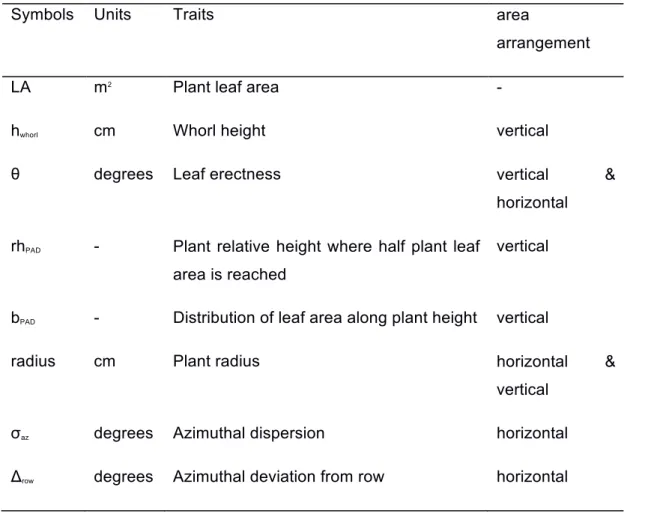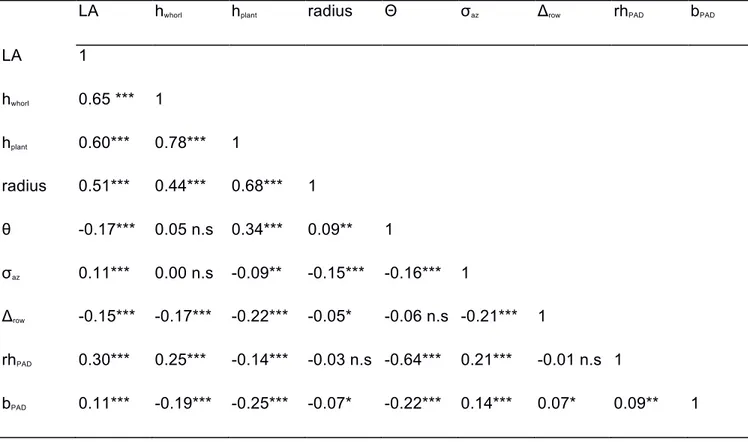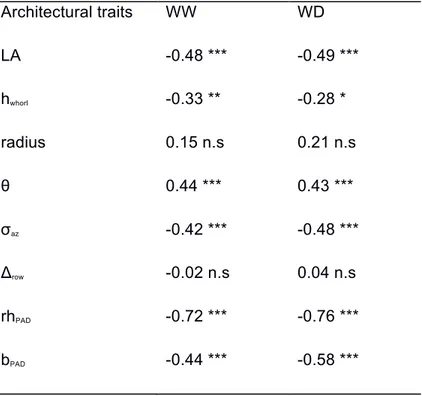Changes in the vertical distribution of leaf area enhanced light interception efficiency in maize over generations of selection
Texte intégral
Figure



Documents relatifs
This potentially increased the carbon availability to ears, via the amount of light absorbed by the intermediate canopy layer, (ii) Neither the horizontal distribution of leaves in
The des- truction process by a three-body association of CO and O is not important compared with the reaction (44) between CO and OH.. 106-108, 1973/V-VII) Carbon Monoxide and
The second paper describes the validation of the different available ozone profile measurements (Lambert et al., 2014) and the third paper provides information about and an overview
The main properties of this inner magnetospheric region are briefly recalled. The dynamical response of the plasma s phere to enhancements of geomagnetic activity
hollow-cathode with an absorbing atomic beam of calcium inserted in its light path, The observed level crossing signals are in very good agreement with theoretical
Needs are calculated from potential increments of leaf surfaces and internode volumes using two parame- ters: the structural specific leaf area (ρ s ) and the
Because leaves explore a large range of azimuths during their growth, we studied the effect of azimuthal re-orientations on light absorbed daily by canopies of
The main ambition of our study concerns the quanti fi cation of the active transport by DVM and its impact on the nutrients, primary production, and ef fi ciency of the carbon export